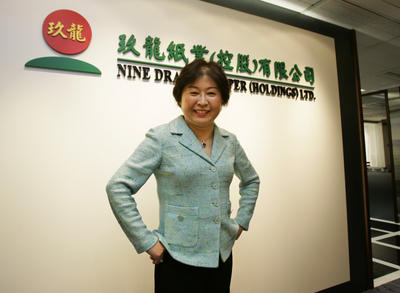China’s political structure has not limited women’s access to politics, business or social affairs since its 1949 revolution. In fact, access for women is widening; a phenomenon supported by the nation’s relatively inexpensive childcare system and broad educational opportunities. But this easy access has evolved in different ways for women in the private and public spheres.
Female business leaders have thrived in recent decades. The 2010 Hurun Report’s List of Self-Made Women Billionaires noted that 11 of the world’s top 20 independently wealthy women are Chinese. Yet the percentage of women among the Chinese government’s top leaders, especially members and alternate members of the Central Committee of the Chinese Communist Party, shrank from 11.4 per cent in 1977 to 7.6 per cent in 2002. While women serve as officials in more than 80 per cent of the country’s provincial-level governments, only about 8 per cent have a woman in the top position. This gender discrepancy between private and public sectors partly illustrates the unbalanced development pattern in China: the nation now has a rapidly maturing market economy alongside a political system that has shown relatively slow progress on reform.
In general, two obstacles stand in the way of real progress for women in China’s political sphere. One is perception, and the other is reality. Many Chinese men tend to think that women lack the capacity to engage in politics. But this field is about people who take the lead in making collective decisions; a process which requires wisdom, vision, management skills and the ability to lay, execute and revise plans. These abilities are not gender-specific. And today, as more women undertake higher education and hone their professional skills, this demographic is more prepared than ever to take on political responsibility.
But sometimes misconceptions about women are a result of how women see themselves. In many places, women accept traditional, secondary roles in the context of family and society, as they believe that being attentive and obedient are virtues. This perception can be altered when female role models become more visible in political, business and social circles, and as more women assume active roles in day-to-day business and social affairs. At Caixin Media, women account for more than 60 per cent of newsroom staff. Their achievements have put them at the top of China’s journalism industry.
The second obstacle is the reality of the system. We can hardly expect that situation to change overnight, despite well-intentioned legislation and regulations. India adopted a constitutional amendment in 1994 that stipulates one-third of seats in village-level government bodies must be reserved for women. This raised the ratio of female village heads — but the official posts won by women in India are not necessarily powerful. And in many cases, seats reserved for women are left unfilled, or are eventually assumed by men.
In reality, it can take a long time to change minds in a traditionally patriarchal society. Even in Kerala, the Indian state that successfully broke the caste system and whose Human Development Index is comparable to that of developed nations, female leaders more often serve as representatives of parties and their policies, not as advocates for women. Besides, only a minority of Asian women are conversant with their legal rights. This lack of awareness about the rights and privileges available to women hinders the impact of legal remedies.
Georg Simmel wrote in Female Culture that the world has no neutral, ungendered culture because, ‘with the exception of a very few areas, our objective culture is thoroughly male’. He also said that outstanding performances by women are celebrated as ‘thoroughly manly’. Modern progress in Asian societies has disproven this. Female characteristics are increasingly recognised and included in common notions of leadership. For instance, micro-finance banks often lend to women, as they tend to be less selfish as family leaders, fairer and more resilient to outside pressure. This same conclusion is reflected in a lower corruption rate for female leaders and a higher probability that a government will adopt people-oriented policies while giving proper attention to social welfare and public benefits.
Women are accepting multiple roles in society and in their families. Sometimes these roles conflict, usually due to friction over social norms and popular expectations. For Asian women to participate more actively and widely in politics, to make having female leaders at the top the norm rather than the exception, and to broaden the horizons of the political scene, we need new thinking within and across borders. That can only happen if we make the voices of women heard, ensure women’s actions are visible to the public, and approach political participation with firm determination.
Hu Shuli is Editor-in-Chief at Caixin Media, publisher of Century Weekly, China Reform and the English-language Caixin Weekly: China Economics & Finance. An earlier version of this article was published by Global Asia

